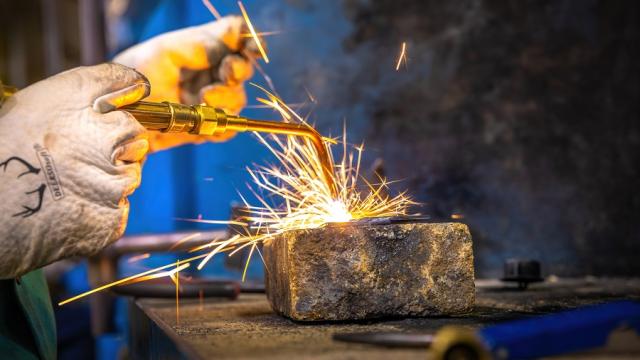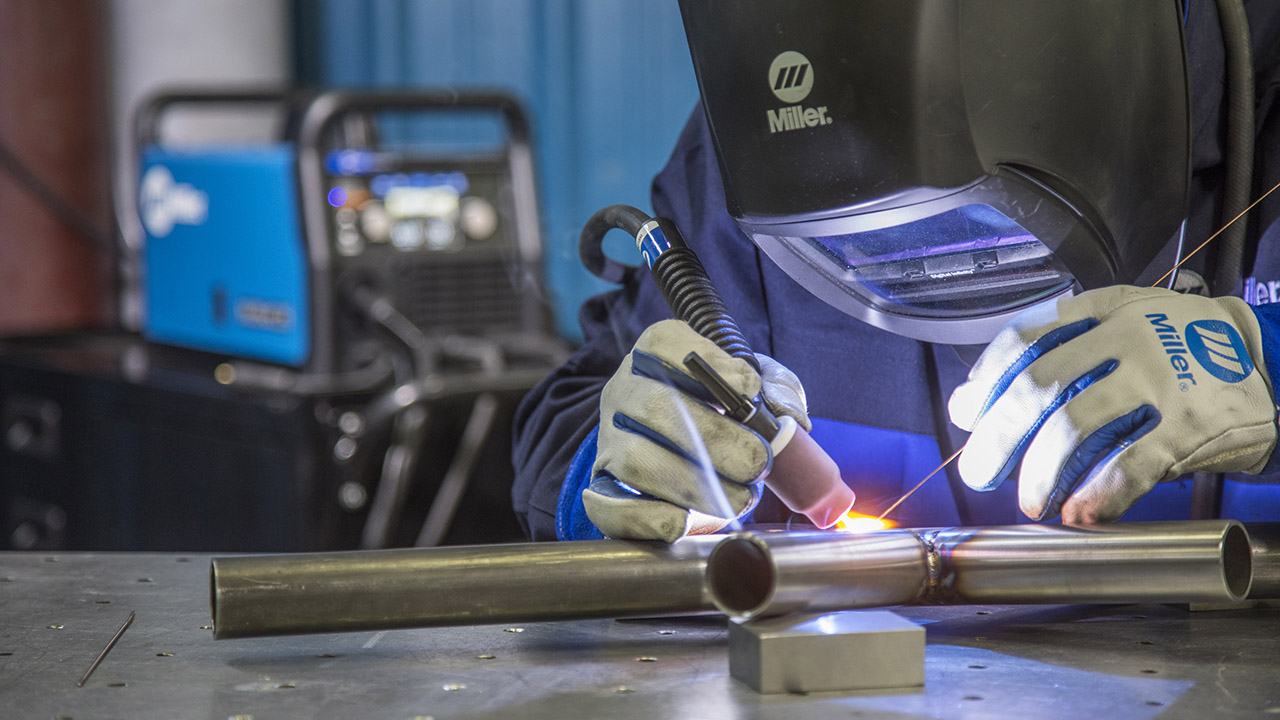Common Welding Fixing Issues and Exactly How to Address Them Successfully
Welding repair services often encounter a series of concerns that can endanger the stability of the end product. Usual troubles consist of poor penetration, porosity, and misalignment, to name a few. Each issue provides one-of-a-kind challenges that require particular approaches for resolution. Understanding these problems is essential for welders intending to improve their end results and abilities. This conversation will discover these typical welding repair problems and efficient approaches to address them.
Poor Infiltration
Poor penetration occurs when the weld steel falls short to fully fuse with the base material, causing weak joints and prospective structural failings. This issue often originates from inadequate warmth input, wrong electrode angle, or inappropriate welding speed. Welders may encounter insufficient infiltration due to a mistake of the required criteria for a particular material thickness or type. Furthermore, contamination on the base material's surface area can hinder efficient bonding, intensifying the issue. To attend to poor infiltration, welders must guarantee proper settings on their tools and maintain a clean work surface area. Regular inspection of welds is suggested to determine any deficiencies early, enabling prompt corrections and the prevention of compromised structural stability in bonded settings up.
Porosity
Porosity is an usual defect in welded joints that materializes as tiny gas bubbles entraped within the weld metal. This flaw can endanger the stability of the weld, leading to minimized toughness and potential failure under anxiety. Belgrade Welding. Porosity usually emerges from contamination, wetness, or improper welding techniques, which permit gases to get away into the liquified weld pool. To resolve porosity, welders should guarantee correct surface area prep work, preserve a tidy workplace, and use suitable welding specifications. In addition, selecting the right filler product and shielding gas can mitigate gas entrapment. Routine inspection and screening of welds can aid identify porosity early, guaranteeing timely restorative activities are taken, therefore preserving the quality and reliability of the bonded structure
Misalignment
Misalignment in welding can emerge from various elements, including inappropriate setup and thermal expansion. Recognizing the origin causes is necessary for effective resolution. A number of modification methods are readily available to straighten parts and ensure structural honesty.
Reasons for Misalignment
Welding imbalance often originates from a range of underlying issues that can jeopardize structural stability. One main reason is improper fit-up of parts before welding, which can cause gaps and irregular surface areas. Variations in thermal development during the welding process can also cause distortion, especially if the products being signed up with have various coefficients of expansion. In addition, inadequate fixturing and clamping may fail to hold components securely in place, leading to movement throughout welding. Improperly conserved tools, consisting of welding equipments and tools, might introduce inconsistencies in the weld bead, additional adding to misalignment. Driver error, stemming from inadequate training or experience, can likewise play a substantial duty in producing misaligned welds.

Correction Methods Readily Available
Dealing with imbalance effectively calls for a combination of rehabilitative strategies tailored to the particular issues handy. One usual technique is using jigs or components to hold components in the appropriate position throughout welding, ensuring constant placement. Additionally, preheating the products can help in reducing distortion and enhance fit-up. For considerable imbalance, mechanical realignment strategies, such as utilizing hydraulic jacks or clamps, can be used to fix the setting prior to welding. Post-weld heat therapy might also be needed to eliminate stresses triggered by misalignment. Cautious examination and adjustment during the arrangement stage can protect against imbalance problems from becoming significant troubles, promoting a smoother welding process and enhancing general structural integrity.
Distortion
Distortion is an usual challenge in welding that can arise from different variables, including irregular cooling and heating. Recognizing the root causes of distortion is necessary for applying effective prevention techniques. Resolving this issue not just enhances architectural honesty yet also enhances the overall high quality of the weld.
Sources of Distortion
When subjected to the extreme warm of welding, materials frequently undertake adjustments that can bring about distortion. This phenomenon mainly arises from thermal growth and tightening throughout the welding procedure. As the weld area warms up, the material increases; upon cooling, it gets, which can create interior tensions. Furthermore, unequal home heating throughout a work surface can exacerbate these anxieties, leading to warping or flexing. The sort of material likewise plays a substantial role; steels with varying thermal conductivity and coefficients of growth may respond in different ways, causing unpredictable distortions. Furthermore, bad joint design and insufficient fixturing can add to misalignment during welding, boosting the probability of distortion. Understanding these reasons is crucial for efficient welding repair work and avoidance techniques.
Prevention Techniques
Reliable avoidance techniques for distortion during welding concentrate on managing heat input and making certain proper joint layout. Keeping a consistent warmth input helps to minimize thermal development and tightening, which can lead to distortion. Using methods such as pre-heating the work surface can additionally reduce the temperature slope, promoting consistent heating. Furthermore, choosing suitable joint layouts, such as T-joints or lap joints, can enhance security and lower stress concentrations. Executing appropriate fixturing to protect the work surfaces in position additionally help in maintaining positioning during the welding process. Staggered welding series can disperse heat much more equally, stopping localized distortion. By applying these approaches, welders can considerably lower the likelihood of distortion and improve the total quality of their welds.
Breaking
Splitting is a typical problem encountered in welding repair work, typically resulting from various elements such as incorrect cooling prices, material choice, or insufficient joint prep work. The incident of cracks can substantially endanger the integrity of the weld, bring about potential failings throughout operation. To resolve this problem, welders need to initially assess the source, ensuring that materials are suitable and properly picked for the details application. Additionally, managing the air conditioning rate during the welding process is essential; fast cooling can cause stress and result in splitting. Appropriate joint layout and prep work additionally contribute to reducing the risk. Carrying out these approaches can enhance weld quality and durability, inevitably lowering the possibility of cracking in ended up weldments.

Insufficient Blend
A substantial problem in welding repair work is insufficient fusion, which happens when the weld metal does not sufficiently bond with the base product or previous weld passes - Montana Mobile Welding and Repair Welding. This issue can result in weak points in the joint, possibly endangering the stability of the bonded structure. Factors adding to insufficient fusion include not enough warmth input, incorrect welding technique, and contamination of the surfaces being signed up with. To address this concern effectively, welders need to assure correct pre-weld cleansing and surface area preparation, along with readjust their welding specifications to accomplish ample penetration and combination. Normal assessment during the welding process can likewise aid determine incomplete fusion early, permitting for prompt restorative steps to enhance the overall high quality of the weld
Overheating
While welding repairs can improve check my reference architectural honesty, overheating provides a significant obstacle that can result in product deterioration. Too much warm during welding can alter the mechanical buildings of steels, causing minimized strength, raised brittleness, and bending. This sensation is especially critical in high-stress applications where architectural dependability is extremely important. Recognizing overheating can involve visual evaluations for staining or distortion, in addition to checking temperature throughout the welding process. To alleviate the risks linked with getting too hot, welders must employ appropriate techniques, such as regulating heat input, readjusting travel rate, and using appropriate filler products. In addition, executing pre- and post-weld warmth treatments can help recover material buildings and enhance the total top quality of the repair, making certain long-term efficiency and safety and security.
Often Asked Questions
What Are the Common Indicators of a Welding Issue?

Exactly How Can I Examine My Welds for Top quality?
To examine welds for top quality, one can utilize visual inspections, ultrasonic screening, and radiographic techniques. Each method ensures structural stability, recognizes flaws, and validates adherence to defined standards, ultimately enhancing the dependability of the bonded joints.
What Safety and security Preventative Measures Should I Take While Welding?
When welding, one need to focus on safety by putting on ideal individual protective equipment, ensuring appropriate ventilation, safeguarding combustible products away, preserving a tidy workspace, and understanding surroundings to protect against accidents and injuries.
Can I Fix a Weld Without Remodeling the Entire Joint?
Repairing a weld without remodeling the whole joint is feasible, depending on the damages (Montana Mobile Welding and Repair Belgrade). original site Strategies such as grinding, including filler product, or using a welding process can successfully deal with details imperfections while maintaining the surrounding framework
What Tools Are Vital for Effective Welding Repairs?
Crucial tools for effective welding repair services consist of a welding machine, cord brush, mill, protective gear, clamps, and filler products. Each device plays an essential function in making sure quality and safety and security during the repair process. Porosity commonly occurs from contamination, moisture, stainless steel welding wire or improper welding methods, which allow gases to run away right into the liquified weld swimming pool. Inadequately conserved devices, consisting of welding machines and tools, might present variances in the weld bead, further adding to misalignment. When subjected to the intense warm of welding, materials commonly go through adjustments that can lead to distortion. Splitting is an usual issue experienced in welding repair work, often resulting from different factors such as improper air conditioning rates, material option, or inadequate joint preparation. A considerable concern in welding fixings is insufficient blend, which takes place when the weld steel does not sufficiently bond with the base product or previous weld passes.